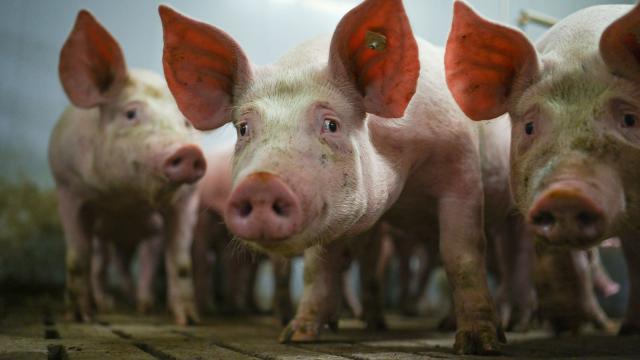There are no two ways about it, we need to find an alternative to fossil fuels to power the cars, boats, and planes we rely on for transportation, shipping, and filling our spare time. So far, we’ve got companies like Porsche investigating e-fuels, Cummins is building hydrogen engines and there’s even a tractor startup using ammonia to power its vehicles. But have you ever heard of a car powered by pig fat?
A new report from Transport & Environment (T&E) has been looking into just that as it investigated the feasibility of animal fats as biofuels. According to the paper, waste animal fats from the meat industry can be rendered down and turned into alternatives to gas and diesel.
Such fuels are common in Europe, T&E reports, with the continent burning 46% of its waste animal fat as biofuel in trucks and heating appliances. Proponents of animal-based biofuels will tell you this is great, as the process makes use of a product that would traditionally go to waste. That’s because biofuels can be made from any of the three categories of animal fats, whereas products such as cosmetics and pet food are reliant on the best Category 3 fats.
But as global shipping companies and airlines shift their attention to sustainable fuels, can waste animal fat meet demand? According to T&E, international airlines’ focus on sustainable aviation fuels (SAF) could be about to ramp up the pressure on suppliers on animal fats for fuel. The report claims:
“Demand for animal fats in biofuels is projected to triple by 2030 compared to 2021 according to data collected by T&E from Stratas Advisors. This feedstock is expected to be the most used material in SAFs after used cooking oil (UCO), with fuel suppliers investing heavily in the processing of animal fats for biodiesel and other fuels.”
So if we are soon to fly around on planes powered by pig fat, just how much of the raw material are we going to need to source? Well, according to the report, it would take the waste fat from 8,800 pigs to power a one-way transatlantic flight.

As we currently slaughter around 70 billion animals a year, that’s enough fat to run nearly 8 million flights. Worldwide airline takeoffs currently average around 100,000 flights per day, meaning that each year we’d have enough animal fat to cover a little over two months’ worth of departures.
What’s more, we’re increasingly told that we need to reduce our meat consumption if we want to cut global emissions. So if we all club together and manage this, supplies of waste animal fats could begin to drop just as airlines start banking on them as an alternative to jet fuel.
This is where the worry sets in for T&E, which warns that this could force producers to turn to alternative oil sources – such as palm oil. As increasing palm oil consumption leads to the destruction of ancient forests to make space for new plantations, the report warns that the quest for clean aviation could indirectly ramp up global emissions.
In fact, it warns that substituting animal fats for pal oil could make these biofuels “up to 1.7 times worse than conventional diesel.” So, pig fat fuel might not be the silver bullet some are hoping for.
